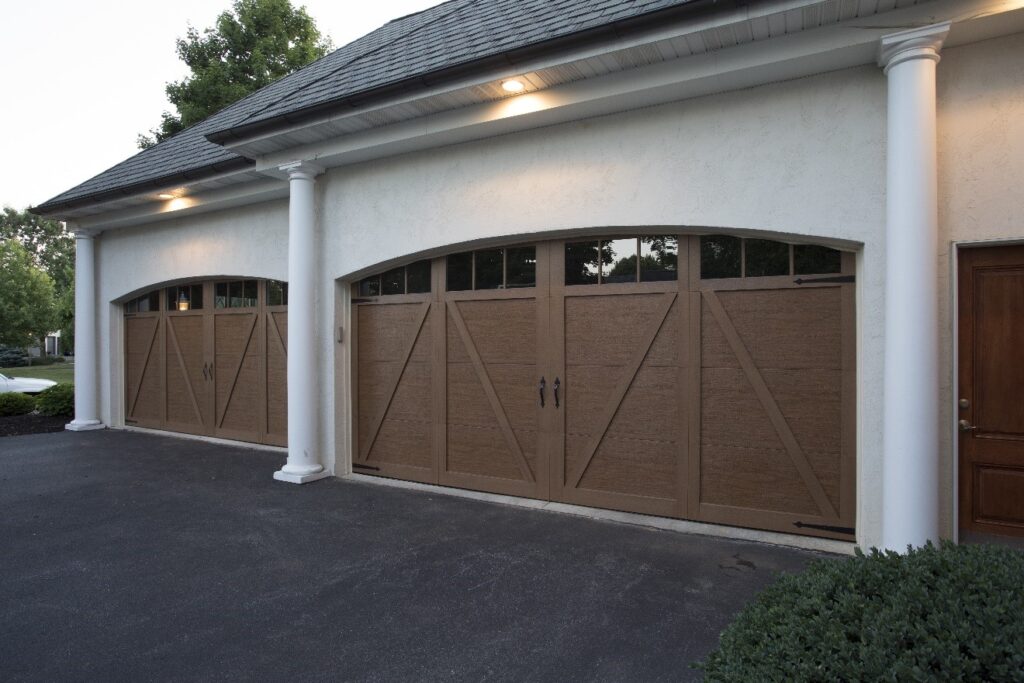If you’re the owner of your first official garage door, you may not realize how hazardous garage doors can be when neglected or mishandled. Here are six ways to practice safe garage-door management.
1. Learn How to Operate Your Garage Door
Take the time to study and use the information in the owner manual that came with your garage door opener. If you don’t have the original manual, contact the manufacturer of your garage door opener to learn where you can obtain a copy of the instructions.

Consult official sources when learning the operation of your garage door opener. Each model of opener has its own codes and special methods of operation, and you need to know the specifics.
Garage door owner manuals contain vital information about the following:
- How to activate the garage-door emergency release
- How to start, stop, and reverse your garage door
- How to lock or disable the garage door mechanism
- How the safety beams or sensors work
- How to spot signs of garage-door trouble
Teach every responsible adult and older child in the household the above information. Show them know how to safely operate the garage door remote and activate the emergency release mechanism.
2. Make the Garage a No-Go Zone for Kids
According to experts at the U.S. Consumer Product Safety Commission, garage doors cause around 30,000 accidental injuries per year. Avoid all potential garage door incidents with children by making the garage off-limits to kids.
Instead of storing kids’ bikes and scooters in the garage, set up a small shed or covered area for their rides. Kids won’t be tempted to ride in and out of the garage when they have another spot to fetch their wheels.
If kids must be around the garage to enter and exit vehicles or for other reasons, constantly reinforce the dangers that garage doors pose. Supervise kids at all times when garage doors open and close, and set rules about how close kids can be when they stand or play near moving garage doors.
3. Keep the Remote in a Safe Spot
A small child may find the garage-door remote-control device in a car seat or on a kitchen counter and inadvertently open or close your garage door at the wrong moment. A carelessly placed garage-door opener in a car parked in the driveway can invite device theft and future entry into your home.
Keep track of all garage-door-opener remote controls to avoid accidentally activating or intentionally stealing the door opener. If you have small children or people with cognitive impairment in the home, keep garage-door-opener remote-control devices in areas of the residence where the younger kids and adults with impairments can’t access.
Don’t leave your garage-door-opener remote control out in plain view inside your car or garage. Hide the opener under your car seat, in the glove box, or in another out-of-sight area of your car. Store extra remotes in locked or inaccessible areas of your garage or home, and deactivate the devices.
4. Accommodate Pets Safely
Some people leave their garage doors open just a bit to let pet cats and dogs have access to garage shelter and the outdoors. You may believe opening the garage door only eight inches to one foot in height will keep out intruders while keeping your pet comfortable.
However, wily thieves can manipulate a constantly open garage door to gain access to your garage and home. Neighborhood strays and pests, including rodents, reptiles, and insects, are more likely to invade your space when you leave the garage door slightly open. Precipitation, including snow and rain, may flood your open garage.
Instead of leaving the garage open and your space vulnerable, install a pet door on the back or side door of your garage. If you have no standard door on your garage, build or purchase a separate shelter for your pets in the backyard so you can securely close your garage door.
5. Test the Garage Door Periodically
Ask your garage-door installer how often you should test the safety mechanisms on your garage door and garage-door opener. Some experts recommend testing your garage door reverse mechanism at least once per month.
One method to test a garage-door opener is to put a full roll of paper towels, a stuffed animal, or a wooden board in the path of the garage door. A garage-door opener that doesn’t reverse when it senses or contacts the object in its path is an unsafe door opener that you should service or replace immediately.
6. Schedule Routine Garage Door Maintenance
Schedule routine maintenance and inspection of your garage door and garage-door opener to ensure that all components work properly. Some components in your garage-door system require adjustments and lubrication on a semi-regular basis. Your garage door professional can use the maintenance call to check for any problems with your system.
If your garage door sticks, vibrates, or acts weird in any way, call out an expert between inspections. In some cases, you can’t fix the garage-door problem yourself. For example, adjusting torsion and extension springs on garage doors requires expert skill to avoid personal injury and property damage. Always call in experts for spring-related garage door issues.
Solve all of your garage-door safety issues in Central Pennsylvania by contacting Shank Door today.
Trackback from your site.
